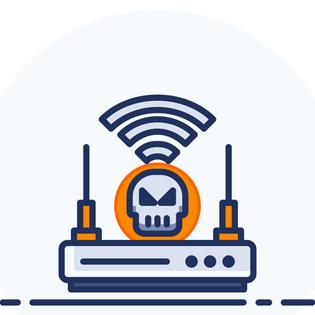Advertiser Disclosure
All About Cookies is an independent, advertising-supported website. Some of the offers that appear on this site are from third-party advertisers from which All About Cookies receives compensation. This compensation may impact how and where products appear on this site (including, for example, the order in which they appear).
All About Cookies does not include all financial or credit offers that might be available to consumers nor do we include all companies or all available products. Information is accurate as of the publishing date and has not been provided or endorsed by the advertiser.
Editorial Policy
The All About Cookies editorial team strives to provide accurate, in-depth information and reviews to help you, our reader, make online privacy decisions with confidence. Here's what you can expect from us:
- All About Cookies makes money when you click the links on our site to some of the products and offers that we mention. These partnerships do not influence our opinions or recommendations. Read more about how we make money.
- Partners are not able to review or request changes to our content except for compliance reasons.
- We aim to make sure everything on our site is up-to-date and accurate as of the publishing date, but we cannot guarantee we haven't missed something. It's your responsibility to double-check all information before making any decision. If you spot something that looks wrong, please let us know.
Some people mistakenly think viruses only invade Windows PCs and Macs. Unfortunately, hackers are getting better at attacking different devices. If you get malware on your iPhone or Android phone, does a factory reset remove it? The short answer is that it can and will in most cases, but there are some things to consider first.
Once you do a factory reset, it’s an irreversible act. You cannot stop the process if you suddenly change your mind. If this seems too drastic, you can do a soft reset instead, which won’t erase all your data. Keep reading to learn how to perform factory resets, other solutions to try first (like using the best antivirus), and if a factory reset is the right option for you.
Viruses may remain after a factory reset
When to factory reset your phone
Other solutions to try first
How to factory reset Androids
How to factory reset iPhones
Tips to avoid viruses
FAQ
Bottom line
Factory resets remove most viruses
If you find a virus on your phone, a factory reset will remove it in most cases. A factory reset, also called a hard reset, returns your device to its original factory settings. Your smartphone will have a feature that allows you to revert the drivers and operating system to a similar or original state from when you bought the phone.
Performing a hard reset will get rid of most viruses on your device because it wipes everything away. When you return your phone to its original state, the process removes all programs and files from your device and leaves your phone with a clean slate.
Viruses may remain after a factory reset
The factory reset solution may not always work. Since viruses are steadily evolving and hackers are looking for ways to invade phones, some malware can avoid detection. These events are rare, but you should know about them in case they infect your device. Some instances where viruses don’t get removed by a factory reset are:
1. You may have rootkit malware on your iOS or Android device. This malware will give administrator access to hackers without your knowledge.
2. Your backup could also be infected. Since factory resets erase all your phone data, you may want to back up your device so you don’t lose your files. If that backup has an infected program, you could unknowingly restore the same virus to your phone.
3. Malware is sneaky and can hide in places you might not expect. You may have Wi-Fi adapters, keyboards, or other external devices that could contain viruses. Once you connect your phone to them, the virus can reactivate itself from these peripherals.
4. Advanced malware can hide in your recovery partition of the device. That is the part of your phone’s storage where the factory restore settings reside. A factory reset doesn’t wipe this part out, so if viruses are hiding there, they won’t be removed. Sometimes antivirus software doesn’t find this kind of malware.
When to factory reset your phone
If you’ve had a malware attack on your device, you may want to consider performing a factory reset. This hard reset will wipe out the device data. When that happens, the dangerous viruses get deleted.
A hard reset will also clear out unnecessary clutter on your phone. After a while, you may have files and apps you no longer need. A factory reset will remove those, and the device’s performance will improve. When you do this, it could remove any malware located in those apps or files.
Other solutions to try first
A factory reset can be helpful, but it can also remove the apps and files you want to keep. Performing a hard reset isn’t your only option if you get a virus on your phone. Before you try a factory reset, consider these methods first:
- Equip your phone with virus protection. When you have antivirus software on your device, it can scan your files and programs to remove viruses before they become a problem. If you're not sure what antivirus app is best for your phone, we recommend Bitdefender for Android, McAfee for iPhone, and Norton for both.
- Remove suspicious apps. Reboot your phone in Safe Mode to uninstall recent applications that could be causing issues.
- Scan backup files. Before you create your backup, scan the files to be sure there are no viruses or malicious apps attached to them.
- Clear the cache. You can clear your phone’s cache and your browser’s cache to delete possible malware.
-
Easy-to-install antivirus protection
-
Secure VPN and password manager included
-
Parental control features
-
Multi-tab navigation may be overwhelming at first
How to factory reset an Android smartphone
When you’re ready to perform a factory reset on your Android device, make sure you save any files or photos you want to keep. Once you begin the factory reset, you won’t get another chance to back up your data.
- Go to your Settings, then select System.
- Choose Reset options, then Erase all data (factory reset).
- Tap Erase all data. Enter your PIN and tap Erase all data again.
How to factory reset an iPhone
Before you erase your data, be sure to back up your iPhone. If you don’t want to hard reset your Apple Watch, unpair it from your phone first. You can do that in the Watch app on your iPhone. Follow the steps below when you’re ready to do a factory reset.
- Go to your Settings.
- Scroll to General, then select Reset.
- Tap Erase All Content and Settings.
- Confirm your changes.
Tips to avoid viruses
There are easy tips you can use to avoid getting viruses on your phone. With technology, there’s always a possibility of running into malware, but being proactive can reduce those chances. Follow these tips to protect your phone and avoid viruses:
- Only download apps from trusted sources. Avoid third-party app stores. Use the Google Play Store or Apple App Store to get your applications. Never jailbreak your device in an effort to get apps not supported by trusted sources.
- Check Android apps for safety before downloading. Look at and review the developer profile and read user reviews of the app. Check the download count and look for high numbers. Use caution when an app is new, and consider waiting until it’s been around for a while.
- Read expert reviews. Look for expert reviews online and independent experiences of new apps before you install them on your device.
- Update your phone. Updates contain fixes for bugs and patches for security issues. Always update to the latest version of your phone’s operating system.
- Don’t open suspicious links. If you get emails, pop-ups, or texts containing links that look suspicious, don’t click them. These could contain malware or redirect you to malware.
- Use caution on public Wi-Fi. Most public Wi-Fi is not secure. That makes it simpler for hackers to see your online traffic. Don’t access financial or other sensitive data when using public Wi-Fi unless you have a VPN.
- Set your iPhone and iPad to ask for your Apple ID any time you download a new app. This prevents someone from downloading spyware or another type of malware if they get a hold of your phone.
- Always use virus protection. Having virus protection is an extra layer of security for your phone. It can help protect against malware and other cyber threats.
FAQ
How do I know if my phone has a virus?
You may know you have a virus on your phone if you see signs like extra data usage, fraudulent charges on your accounts, and a fast battery drain. You can also scan your device with antivirus software to know for sure if your phone has a virus.
How do I make sure a virus is gone?
You can make sure a virus is gone by scanning your backup and by checking any peripheral devices for malware. Then you can run a virus scan on your device.
Do I need antivirus software for mobile phones?
It is a good idea to have antivirus software on your mobile device because phones can get viruses the same way computers can get them. Since you can click on the same kinds of links and install similar apps, you can easily get a virus on your mobile phone.
Bottom line
There are times when a factory reset is the best method to use when removing a virus from your device. In most cases, performing a hard reset will wipe infected files from your phone. There are rare situations where viruses may remain on your device, even after a factory reset. If that’s the case, you may have to try some other options, like scanning with your antivirus software and checking external devices for malware.
Remember, you can access the same apps and websites from your phone that you can access on your computer. That means your mobile device is susceptible to viruses, too. Since hackers aren’t going to go away, it’s important to download the best antivirus for Android or the best antivirus for iPhone, depending on your device.
-
All-in-one protection for your personal info and privacy
-
Excellent antivirus protection
-
Additional features like a file shredder and parental controls
-
Multiple pop-ups for text notifications can be annoying






